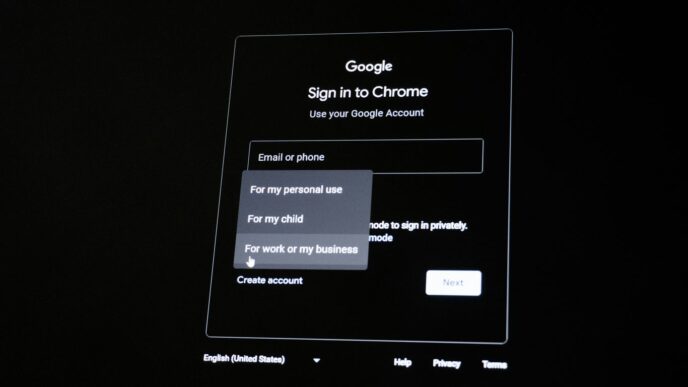The EU approach to AI regulation is changing the way artificial intelligence is developed and used across Europe. Instead of letting tech companies do whatever they want, the EU has put rules in place to protect people and keep things fair. These new rules, especially the EU AI Act, are meant to make sure AI is both safe and useful for everyone. With big changes coming in 2025, businesses and developers now have to pay close attention to how they build and use AI. The focus is on balancing new technology with safety and basic rights, all while trying to keep Europe ahead in the global AI race.
Key Takeaways
- The EU approach to AI regulation is based on making AI human-focused and trustworthy, with clear rules for safety and rights.
- AI systems are sorted into four risk levels, with the strictest rules for high-risk or banned uses like social scoring.
- General-purpose AI models face new requirements in 2025, including technical paperwork and deadlines for following the law.
- Protecting people’s rights and keeping the market fair are top priorities, even as the EU pushes for more AI innovation.
- The EU’s rules are starting to shape how other countries think about AI, but making everything work together globally is still a challenge.
Foundations of the EU Approach to AI Regulation
When you look at how the EU shapes its rules for artificial intelligence, it’s all about anchoring AI in what people, not just markets or companies, actually need and want. The idea is pretty straightforward: keep humans at the center, encourage smart AI growth, and never forget that what’s legal isn’t always what’s right.
Human-Centric and Trustworthy AI Principles
The EU’s entire strategy starts with one key goal: AI should serve people, not the other way around. That’s not just talk. Every new guideline or law has to consider how these technologies help, protect, and respect individuals. Here’s what you’ll see when you dig into this approach:
- Human oversight is mandatory. Automated systems shouldn’t make important decisions without a way for people to step in or review those choices.
- Systems must be reliable and explainable. Users need to know what’s happening, not just take it on faith.
- Respect for privacy and personal data is non-negotiable.
EU officials talk a lot about “trustworthy AI,” and that includes fairness, transparency, and always keeping people’s rights at the forefront. That’s a big difference from some other places, where the focus is more on how quickly you can get products to market, or how much data you can collect.
Balancing Innovation and Safety
No one in Brussels wants to squash new ideas with hard rules. The goal is to encourage smart development—but not at any cost. So they try to create clear, simple pathways for bringing new tech to market while laying down real boundaries. It’s like saying, "Go ahead and build, but keep an eye on the curb."
Some main points in this balancing act:
- Support for research and startups, even small ones, with funding and shared infrastructure.
- Rules that get stricter as the risks to people or society increase.
- Efforts to cut red tape where AI is low-risk—so it’s not just giant companies that succeed.
This model is meant to draw in investment and make Europe a hub for AI, without repeating the "move fast and break things" attitude that’s created problems elsewhere.
Legal and Ethical Objectives Driving Regulation
Underneath the details, the big picture is about law and values:
- Protecting fundamental rights, like freedom, non-discrimination, and human dignity.
- Making sure AI follows the rule of law—not some gray area where tech outpaces regulation.
- Aligning with democratic principles, so decisions about AI aren’t just made by engineers or business leaders.
Here’s a quick table summarizing how the EU stacks up against other regions on these drivers:
| Goal | EU Approach | Other Models (e.g. US, China) |
|---|---|---|
| Human focus | Central | Varies/Central (US), Less central (China) |
| Innovation vs. safety | Balanced | Often Pro-Innovation |
| Fundamental rights | Legally binding | Advisory or non-binding (US) |
| Transparency | Mandatory for high-risk | Varies |
In the end, the EU’s foundations for regulating AI boil down to giving people confidence. They want citizens to know there are guardrails in place, but also that new ideas won’t be locked out just because they’re novel. It’s a balancing act, and only time will tell if it works as planned.
Risk-Based Regulatory Frameworks in the EU AI Act
The way the EU deals with AI regulation is totally built on risk. They don’t go for a one-size-fits-all rulebook; instead, they match their level of rules and oversight to how dangerous an AI system could be. If an AI tool might cause real harm or mess with people’s rights, it gets more checks. If it’s mostly harmless, the rules are much lighter. This is a pretty big shift compared to other approaches worldwide, which can be stricter without being so targeted, or just less clear overall. A lot of people in tech have had to rethink how they plan for compliance because changes are coming so fast (compliance challenges for tech companies).
Four-Tier Risk Classification System
The EU AI Act splits AI systems into four categories, depending on how risky they are:
| Risk Level | Examples | Regulation Approach |
|---|---|---|
| Unacceptable Risk | Social scoring, some biometric systems | Prohibited |
| High Risk | AI in infrastructure, hiring, justice | Strict obligations |
| Limited Risk | Chatbots, content creation tools | Basic transparency rules |
| Minimal/No Risk | Video game AI, spam filters | Few or no restrictions |
This sort of table helps companies quickly see where their tools fit and what they’ll need to do.
Addressing High-Risk and Unacceptable AI Applications
High-risk AI is where the rules really get tough. These include anything related to critical decision-making, like who gets a job, access to education, or legal judgments. Unacceptable risk, by contrast, is off the table in the EU. These are things like using AI for public social scoring, or certain types of real-time tracking that just aren’t welcome—full stop.
Here’s what high-risk systems have to cover:
- Put technical and process-based risk controls in from the start.
- Regularly test and check how well these safeguards are working.
- Keep detailed logs for transparency if asked by regulators.
Unacceptable systems don’t get compliance hoops—they’re outright banned.
Transparency and User Rights Across Risk Levels
For most everyday AI uses—like virtual assistants or recommendation engines—the law asks for more simplicity: users just need to be aware they’re interacting with an AI, not a person. It sounds small, but it helps keep things honest and gives users a choice to walk away if they’d rather not engage.
Transparency rules include:
- Telling users when content or interaction is AI-driven.
- Helping users understand potential impacts of AI decisions or suggestions.
- Letting users access information on how the AI operates (within reason).
Basically: the higher the risk, the more paperwork and controls you need. For minor uses, it’s more about being upfront. The point is to keep trust at the heart of things, but without overburdening folks who just want to build helpful, safe-to-use tools.
General-Purpose AI and the 2025 Regulatory Shift

General-purpose AI (GPAI) is about to be regulated in ways tech companies never really expected. The EU’s new rules, starting enforcement in August 2025, are shaking things up for anyone building or selling AI that can be used in lots of different ways. So, what’s changing, and how should organizations get ready? Here’s a breakdown of what’s coming up.
Expanded Obligations for GPAI Model Providers
The days of launching broad AI systems in Europe without strict paperwork or risk checks are pretty much over. Now, any provider of GPAI models needs to:
- Keep detailed technical records for every model
- Perform and document risk assessments—especially for systems using huge amounts of computing power
- Build in safeguards for systemic risks, like serious incident reporting and safety tests
- Comply with copyright laws and content transparency (that means being super clear about what data gets used)
It doesn’t matter if you’re a startup or a tech giant; if your system is meant for many uses and users, these rules apply. Even open source models aren’t left out, unless they’re purely for research.
Compliance Timelines and Enforcement Deadlines
The EU isn’t letting organizations delay. The main deadlines to note are:
| Milestone | Date | Who’s Affected |
|---|---|---|
| AI Act enters force | August 1, 2024 | All AI providers |
| Full GPAI model compliance | August 2, 2025 | All GPAI providers |
Miss the deadline? Firms can face heavy fines or possibly get barred from the EU market. With less than a year until the clock runs out, anyone working on GPAI needs to kick compliance projects into gear now.
Technical Documentation and Transparency Requirements
Transparency and documentation aren’t just buzzwords—they’re now part of the law. Under the new rules, GPAI model providers must:
- Maintain documentation showing how the model was trained (types of data, sources, any filtering that took place)
- Explain intended and foreseeable use cases (and misuses)
- State how copyright-protected materials are handled
- Share key details with the authorities and, in some cases, with users
- Set up a way for reporting and correcting serious incidents linked to their model
Failing to do these things isn’t just a paperwork issue; it could mean real legal trouble or forced changes to product launches.
In a nutshell, 2025 is shaping up to be a huge year for GPAI in Europe. Anyone building these systems should have legal and compliance teams involved early and openly. The bottom line? These rules promise more trust and predictability, but they also raise the bar for what it takes to operate in the European market.
Ensuring Safety, Fundamental Rights, and Democratic Values
Mandatory Safeguards for High-Risk AI
AI systems that manage healthcare bookings, job applications, or even run city infrastructure fall under the EU’s high-risk label, meaning they aren’t just watched—they get the white-glove treatment. Providers must run detailed risk assessments, double-check technical controls, and regularly test for problems before anything bad actually happens. There are yearly audits, and post-launch monitoring isn’t optional. If a system’s risk profile changes, companies have to react fast and document everything. This hands-on approach mirrors what’s happening with strict cookie and data consent rules across tech industries—regular updates and clear explanations are required (clear terms and compliance).
Basic safety requirements for high-risk AI in the EU:
- Ongoing performance and security checks
- Action plans for failures or data leaks
- Official logs explaining key decisions made by the system
Safeguarding Fundamental Rights in AI Deployment
People want to trust that AI won’t sidestep their rights. Here, the EU is drawing clear lines: The law bans certain types of biometric tracking, scoring citizens by behavior, or manipulating vulnerable groups. Every major release of a high-risk AI system needs a written impact analysis showing how it avoids discrimination and respects privacy. These reports go to both regulators and consumers—transparency means everyone knows where they stand.
A few fundamental rights baked into the rules:
- Protection against unfair treatment or bias
- Information rights: users know when AI is involved
- Human review for any major life-impacting AI decision
Promoting Market Competitiveness with Regulatory Clarity
The EU doesn’t want a maze of rules—businesses have enough headaches already. That’s why the EU AI Act lines up requirements with both international standards and other European tech laws. By setting predictable expectations, the regulation helps companies compete fairly instead of just avoiding fines.
Here’s how regulation actually makes things easier for developers:
- Consistent rules throughout the single market, so no country-hopping required
- Publication of official technical guidance and timelines, keeping developers in the loop
- Integration with other digital laws for simpler compliance packages
All these safeguards and requirements are building blocks. They make sure, as the tech landscape keeps shifting, nobody’s left guessing about fairness or how to keep their AI projects above board.
Implementation Challenges and Compliance Strategies
Rolling out the EU AI Act across Europe isn’t as simple as flipping a switch. Organizations have to sort through complicated requirements, deal with tight deadlines, and work with new technical standards. Some teams are ready, others are caught off guard, and nobody wants to miss the mark since mistakes can mean big fines or even being blocked from doing business. Everyday companies are figuring out how to coordinate, prepare, and keep pace as the rules evolve.
Coordinating the AI Value Chain for Compliance
One of the earliest problems is that compliance isn’t just about one company ticking boxes. High-risk AI systems might involve layers of suppliers, developers, and end users. Keeping everyone on the same page demands a lot:
- Collaborating with general-purpose AI model providers to share essential risk and compliance data
- Conducting impact assessments around fundamental rights for every system in use
- Maintaining clear, updated technical documentation for every step in the process
- Participating in stakeholder consultations to shape practical outcomes
For context, key obligations for general-purpose AI kick in August 2025, so organizations are urged to prepare today (phased implementation schedule).
Phased Enforcement and Immediate Business Preparation
There’s no grace period coming—each phase of the rules gets enforced on time. Businesses face a rolling set of deadlines:
| Phase | Key Compliance Requirements | Deadline |
|---|---|---|
| GPAI Transparency | Model documentation & impact sharing | Aug 2, 2025 |
| High-Risk Compliance | Rights assessments & technical logs | Staggered, Q4 2025 |
| Systemic Model Oversight | External audits & systemic risk plans | Early 2026 |
Immediate preparation is critical. Some practical steps for businesses:
- Map all current and planned AI systems to the regulation’s risk categories
- Build internal teams dedicated to compliance and technical documentation
- Start dialogues with suppliers and tech partners about shared obligations
Balancing Flexibility with Regulatory Consistency
Change is the only constant in AI, but the rules require steady documentation and system checks even as technology shifts. To stay both compliant and practical:
- Companies should update risk and safety documentation whenever models or features change
- Revisit impact assessments as AI systems evolve or expand in use
- Stay engaged with evolving Codes of Practice, which allow stakeholders to shape pragmatic and flexible standards
Adoption isn’t perfect. Some see the rules as rigid or burdensome, while others point to more predictable legal ground for planning and investment. But as August 2025 nears, the smartest move is to get organized, coordinate up and down the value chain, and build habits for regular compliance reviews. That’s how Europe’s organizations will stay ready as rules mature, and as new models appear.
EU Influence on Global AI Governance
The EU AI Act isn’t just an internal matter—it’s having a ripple effect far beyond Europe. Countries and regions are watching the bloc’s moves closely, with the way they manage AI potentially reshaping global digital norms for years to come. Let’s walk through how this influence shows up internationally, from risk-based models to tricky interoperability questions.
Diffusion of the Risk-Based Model Internationally
A big part of the EU’s impact comes from its tiered, risk-based approach. Many governments and organizations worldwide are picking up elements of this model, even if implementation can be uneven. For instance:
- Canada’s proposed Artificial Intelligence and Data Act pulls directly from EU risk-based ideas, especially around identifying “high-impact” AI systems.
- The United States has stuck with a sector-by-sector model, but the NIST AI Risk Management Framework and some guidance documents echo EU thinking on risk tiers.
- Global companies often design their products to meet EU requirements, which acts like a default global standard—sometimes called the "Brussels effect."
- Even voluntary frameworks, such as those promoted by the OECD, incorporate EU-style risk differentiation.
Here’s a brief comparison table as of October 2025:
| Region | Regulatory Model | Risk Tiers? | Legal Binding? |
|---|---|---|---|
| EU | Risk-based (AI Act) | Yes | Yes (law) |
| Canada | Proposed risk-based | Yes | Draft (not yet law) |
| US | Sectoral/voluntary | Sort of | Mostly non-binding |
| China | Security-focused | No clear tiers | Yes (state-centered) |
Harmonizing with Global Standards and Principles
It’s not just about copying the EU. There’s also an effort to line up the AI Act with worldwide frameworks. Most notably, the Organization for Economic Co-operation and Development (OECD) AI Principles—endorsed by dozens of countries—laid the groundwork for principles like fairness, transparency, and accountability. The EU built on these principles, creating a more enforceable set of rules.
Key points of harmonization happening now:
- Technical standards (like for transparency and documentation) are increasingly aligned with OECD and G7 guidance.
- Multilateral talks (for example, at the G20 or OECD) reference EU terminology and frameworks.
- Soft law and best practice guides in Asia, South America, and Africa cite the EU as a reference, especially when local laws are still being drafted.
Challenges of International Interoperability
Of course, this global influence isn’t seamless. There are real headaches when different legal systems clash or prioritize different values. Some of the main challenges include:
- Legal Definitions: What is “high-risk” in Europe might not be seen the same way in the US or China.
- Transparency: The EU pushes for robust disclosure from AI providers, while China’s regulations focus on security and state oversight, not on user rights.
- Implementation Speed: Some countries move fast with new AI laws, but alignment with the EU can take years, leaving companies caught in the middle.
A few examples:
- US firms face uncertainty: A system that’s marketable in the States might require a complete tech overhaul for EU compliance.
- Global platforms must decide whether to set their baseline to EU standards (often the strictest) or manage regional versions, which increases complexity and cost.
- Smaller countries and businesses may struggle to keep up, risking exclusion from global markets if they can’t meet EU-derived requirements.
The EU’s heavy hand in AI oversight is reshaping how regulators—and entire industries—think about responsible technology, but the world is hardly moving in perfect unison. As regulations evolve, these frictions and harmonizations will be front and center for anyone working in the AI space.
The Future Impact of EU AI Regulation in 2025 and Beyond
Opportunities and Risks for Innovation
The EU AI Act is about to affect the way companies and individuals use AI across Europe. The regulation’s main idea is finding the right balance between keeping people safe and supporting new ideas. There’s a real shift happening as rules start to kick in this summer—especially for tech businesses. Here are some ways innovation might be affected:
- Predictable rules give startups and companies a clearer roadmap, which helps them plan products with less fear of sudden regulatory changes.
- Companies need to put more resources into compliance, so small players might feel a financial squeeze.
- High-risk and general-purpose AI must meet strict safety and transparency standards, but this also opens the door to safer, more trustworthy innovations.
For example, investors may now feel more comfortable backing trustworthy technologies—think of human-like robots or no-touch interfaces—which are growing fast thanks to clear EU guidelines.
Long-Term Goals for a Harmonized Digital Landscape
The EU’s long-term hope is a level playing field where every country follows the same set of rules around AI. This helps stop regulatory patchwork between member states, so:
- Businesses can compete fairly across borders.
- People know what rights and safeguards they should expect, wherever they are in Europe.
- Tech built in one country is easier to sell or use in another.
Here’s a summary table of expected impacts:
| Impact Area | 2025 Changes | 2030 Vision |
|---|---|---|
| Business Expansion | One framework across the EU | Free movement of AI goods |
| Consumer Rights | Clear user protections | High trust in European tech |
| Innovation Climate | Predictable/strict standards | More investment in safe AI |
The larger plan also ties into digital acts that protect data and online services, so the AI Act is just one piece of a bigger puzzle.
Adapting to Rapid Technological Advancements
Even as AI systems change fast, the EU Act aims to keep pace. The rules are broad enough to include future technology shifts, but there’s still risk that strict rules could freeze innovation or make compliance harder as tech develops. Some challenges on the horizon:
- AI keeps moving quicker than lawmakers can respond, so updates to the law may lag behind real-world changes.
- New kinds of AI—like stuff we haven’t imagined yet—won’t always fit into existing risk categories right away.
- Businesses might find the rules demanding, but many also see an upside: more trust could mean more users and buyers.
All in all, the next few years will test how well Europe can keep its promise of making AI both powerful and responsible. The EU’s blueprint is already being noticed by global partners, and its risk-based thinking could become a new normal—so watching how this story pans out will matter far outside Europe’s borders.
Conclusion
Wrapping things up, the EU’s way of handling AI regulation is pretty unique. They’re trying to keep things safe and fair, but also want to make sure Europe doesn’t fall behind in tech. The rules are all about balancing trust and progress—making sure people feel protected, while businesses still have room to grow and experiment. With the AI Act coming into force, there’s a lot for companies to figure out, especially with all the new paperwork and risk checks. But honestly, it’s not just about rules for the sake of rules. The idea is to set a standard that others might follow, and to make sure AI works for everyone, not just a few big players. As we head into 2025, it’ll be interesting to see how these changes play out in real life. Will it slow things down, or will it actually help build better, safer tech? Only time will tell, but one thing’s for sure—Europe is making its mark on the future of AI.
Frequently Asked Questions
What is the main goal of the EU AI Act?
The main goal of the EU AI Act is to make sure that artificial intelligence is safe, trustworthy, and respects people’s rights. The law wants to help Europe become a leader in AI while making sure that new technology does not harm people or their freedoms.
How does the EU classify different AI systems?
The EU uses a four-level system to sort AI by risk: minimal risk, limited risk, high risk, and unacceptable risk. High-risk systems have strict rules, while minimal risk systems, like video game AI, have almost no rules. Some AI, like social scoring, is banned because it is seen as too dangerous.
What are General-Purpose AI models, and why are they important?
General-Purpose AI models are types of AI that can do many different tasks, not just one thing. They are important because they can be used in lots of ways, so the EU has made special rules for them to make sure they are safe and used responsibly.
When do companies need to follow the new AI rules?
Most of the new rules start in August 2025. Some rules may start a bit earlier or later, but companies need to start getting ready now because there will not be any delays in enforcement.
How does the EU AI Act protect people’s rights?
The Act makes sure that AI systems do not hurt people’s basic rights, like privacy or fairness. High-risk AI has to go through checks and follow rules to keep people safe and respected.
Will these rules affect AI outside of Europe?
Yes, the EU’s rules are strong and may influence other countries. Many companies that want to do business in Europe or with European customers will have to follow these rules, and other countries may use similar ideas in their own laws.














